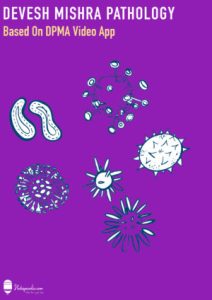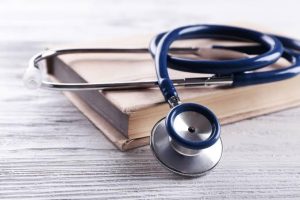Pathology is one of the most troublesome yet in addition perhaps of the most entrancing class in clinical school. Your knowledge of pathology will not only help you through your transporter, but it may also one day save a life.
We have listed all the best ways to help you get the most out of your Pathology study time and retain more information so that you can get the best grades on your exams.
[ez-toc]
1.Study Resources
A proper study resource is a best way to get started to study any subject. The best way to learn any subject is through standard books, for pathology many suggest Robbins as a standard book set but it is too lengthy, therefore an ideal way to study is through notes made by expert, Dr Devesh Mishras Pathology notes are world famous and used by many of the toppers of many exams like INI CET, NEET PG, FMGE. It is easy to comprehend and has covered all major topics needed for NEET PG exam.
2. Have your basics cleared
A lifelong skill is the study of anatomy, physiology, and pathology. To comprehend pathology and the causes of diseases, you do not need to know everything about anatomy and physiology; however, you should be familiar with the fundamentals. Therefore, you should first review the fundamental anatomical structure of the brain, the structures that surround it, the blood supply to those structures, and the lobes of the brain that control each function and the physiology of the brain if you are going to study the pathology of the brain the following week. So, if you go to class and your professor talks about stroke, you will know how a blood clot blocks the cerebral artery and affects the functions of each brain lobe.
3.Instead of memorizing the information, understand it!
Facts cannot be memorized without understanding them. Study sheets and a flowchart of the entire mechanism can be made for each disease. If you try to memorize the facts, you will quickly forget them. Hence, you should understand an illness’ neurotic cycle.
4.Repetition
The more you learn, the more likely it is that you will forget many intricate mechanisms. To retain everything you have learned, all you should need to do is repeatedly repeat it. You can revise your notes on a daily, weekly, or monthly basis, but the more you do it, the more you will know.
5.Take a test to find out how much you know.
You can ask your friends questions based on your own ideas, or you can use past papers or model papers that your teachers or institute have given you. This is a must-do activity if you want to get good grades because you know exactly what you need to study.
6.Check your mistakes
If you make a mistake during a self-review and use your reference materials to correct it, it is very unlikely that you will forget it. Therefore, always pay extra attention to your errors.
7. Use flashcards / Make them
Use pathology notes to study and prepare flashcards for important topics that can help you revise more effectively.
You can make a variety of flashcards, including questions and answers, diseases and pathology, and others. Making flashcards with questions and answers can help you prepare for the exams.
Make a cheat sheet out of the parts that are more important to you and the topics that you usually forget even more easily. Accordingly, it will make amendment a lot less difficult than going through the reading material over and over.
Useful References to learn Pathology
- Devesh Mishra Pathology – Get that edge for your medical exams with the Devesh Mishra Pathology notes. Written by the renowned Dr. Devesh Mishra, these notes provide complete coverage on Pathology for NEET PG, INICET and other medical entrance exams. Simplified with easy to understand language and digestible points, this book makes sure that you not only learn but also remember the most important concepts of Pathology. Get ready to ace your upcoming exams with the help of these invaluable notes!

2. Pathology Image Bank – Make learning Pathology more efficient and comprehensive with the Pathology Image Bank from Notespedia. This note has all of the images, flowcharts, tables, and diagrams to make understanding the material easier than ever. What’s more, crisp and clear explanations ensure that you get the most out of each topic. With this image bank, you can learn Pathology in as few as 3 hours. Plus, it’s been proven to increase your strike rate with 30% of the questions in INICET and NEET PG being image based. Finally, this image bank includes all the images used in Robinson’s Pathology textbook with an emphasis on repeated topics. Get ahead and ace your exams with Notespedia’s Pathology Image Bank!

3. Pathoma – Pathoma authored by Dr. Husain A Sattar is a tremendous resource in studying for USMLE Step 1 and preparing for third year MBBS theory exams. Dr. Sattar’s lectures cover all of the high yield pathology points. He explains everything from a basic mechanistic approach which is critical because that is how the questions are tested, but more importantly it develops true understanding which is never forgotten.
LIST OF IMPORTANT TOPICS IN PATHOLOGY:
General Pathology
- Reversible cell injury
- Pathogenesis of cell injury
- Morphological changes during cell injury
- Fatty liver
- Necrosis
- Apoptosis
- Gangrene
- Calcification
- Atrophy
- Hypertrophy & hyperplasia
- Metaplasia
- HLA system
- Transplant rejection
- Etiology and pathogenesis of AIDS
- Hypersensitivity reaction
- Autoimmune disease
- Pathogenesis of amyloidosis
- Etiology and pathogenesis of oedema
- Shock
- Thrombosis
- Fat embolism
- Air embolism
- Ischemia
- Infaction
- Inflammation defination, signs
- Acute inflammation
- Mediators of acute inflammation
- Granulomatous inflammation
- Primary tuberculosis
- Milliary tuberculosis
- Leprosy
- Syphilis
- Wound healing
- Neoplasia
- Difference between benign and melignant tumors
- Routes of metastasis
- Paraneoplastic syndrome
- Tumor markers
- Blood Vessels
- Atherosclerosis
- Aneurism
Heart
- Acute myocardial infaction
- Rheumatic heart disease
- Bacterial Endocarditis
- Serum Cardiac Markers for MI
Respiratory system
- Lobar Pneumonia
- Lung Abscess
- Chronic bronchitis
- Bronchitis
- Emphysema
- Bronchogenic Carcinoma
- Bronchial Asthma
Liver
- Liver Function test
- Jaundice
- Neonatal Jaundice
- Viral Hepatitis
- Acute Hepatitis
- Cirrhosis
- Alchoholic Liver Disease
- Billiary Cirrrhosis
Kidney
- Renal function Test
- Nephrotic syndrome
- Nephritic syndrome
- Acute pylonephritis
- Chronic pylonephritis
- Wilm’s Tumor
- Acute post streptococcal Glomerulonephritis
- Non streptococcal Glomerulonephritis
- RPGN
- Minimum Change Disease
- Membrano proliferative Glomerulonephritis
- Ig A Nephropathy
- Diabitic Nephropathy
- Hydronephrosis
GIT
- Gastritis
- Peptic ulcer
- Difference between Gastric and Peptic ulcer
- Gastric cacinoma
- Inflammatory Bowel Disease
- Enteric Fever
- Intestinal TB
Endocrine
- Functions of Thyroid
- Thyroid Function Test
- Hashimoto’s Thrroiditis
- Goiter
- Toxic Goiter
- Grave’s Disease
- Lab diagnosis of DM
- Glycosylated Hb
CNS
- Berry Aneurysm
- Cerebral infarction
- CSF examination
- Neuroblastoma
Skin
- Basal Cell Carcinoma
- Premalignant Lesions
Breast
- Fibroadenoma
- Cancer of Breast









